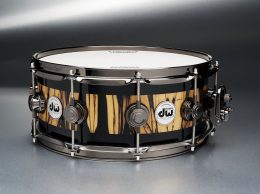American manufacturers keep it close to home in the Tri-Counties

In honor of the long 4th of July holiday weekend, I’m going to devote this column to American manufacturing.
On a June 27 drive to Lompoc, I visited a true American manufacturing success story. DenMat, a company founded in the 1970s by Dr. Robert Ibsen, was sold to a private equity group just before the Great Recession.
It is now being turned around by an energetic, young management team led by Steve Semmelmayer and Robert Cartagena.
In addition to making crowns, bridges and the hot-selling Lumineers line, they’ve bought product lines from Phillips and other companies and have pushed revenue to the $100 million-a -year mark.
DenMat also manufactures compounds, tools and other products used by dentists around the world.
Two things help power the company’s growing business. One is a long row of machine tools manufactured by Haas Automation, right down Highway 101 in Oxnard. The second is a line of 3D printers that manufacture many of the molds for its dental product line.
During the past few days, I’ve also visited on the phone with an old friend, Dr. Phil Wyatt. His family-owned company, Santa Barbara-based Wyatt Technologies, builds some of the world’s most advanced microscopes. He’s done a masterful job of bringing his sons into the business and in dominating this market niche on a global basis.
But Wyatt knows that entrepreneurs don’t get to rest on their laurels. He wonders every day where the highly skilled workers his company will need for the future will come from.
And he’s deeply skeptical about whether emerging giants that are largely in the software business, i.e. Facebook, Amazon and Google, have the capacity to add jobs to the U.S. workforce with the same impact as a manufacturing-based company such as GE, Boeing or United Technologies.
During the first decade of the 21st Century, virtually every pundit in the nation has heralded the demise of American manufacturing.
These days, with U.S. automakers on firmer footing and an energy boom under way, virtually every politician, including President Barack Obama, has heralded its comeback.
The truth, as you might expect, is more complicated. Manufacturing jobs left U.S. shores by the thousands in recent years — that’s partly due to global competition but also because productivity in manufacturing has made huge gains.
You can count the fabulous, price-competitive and highly programmable machine tools built and sold by Haas as part of the reason why making products at DenMat and other manufacturing companies takes fewer workers than in the past. And thanks to those productivity gains, manufacturing itself still accounts for a steady 20 percent of the nation’s output.
But that doesn’t mean Wyatt’s worries are totally unfounded. All of the advances we’ve made in manufacturing are at risk if a new generation of skilled workers doesn’t rise to meet the challenges of a far more automated world. One where 3D printing and concepts still on the drawing boards are the new grinders and lathes.
Over the years, the National Academy of Sciences has described the problem as a “gathering storm” of “category 5” proportion if the U.S education system doesn’t respond.
One of the more frightening and often-repeated data points is that 30 years ago 10 percent of California’s general fund went to higher education and 3 percent went to prisons. Today, it’s more than 10 percent to prisons and it was roughly 8 percent to higher education — that’s prior to the recent budget adjustments.
From Oxnard to Lompoc and across the U.S.A., manufacturing is staging quite a bit of a comeback. The job for us and our leaders is to make the idea of being in manufacturing sexy and cool enough that more of our best and brightest young people will join the team.












